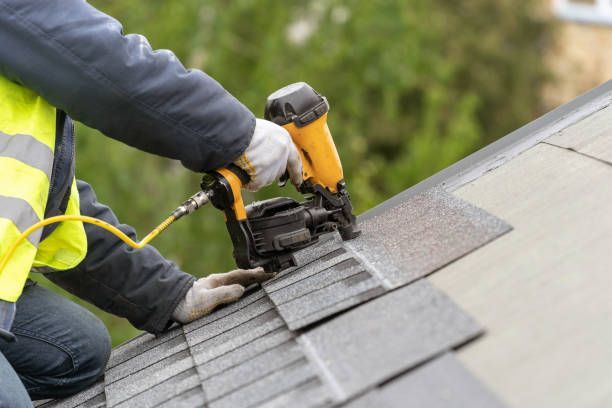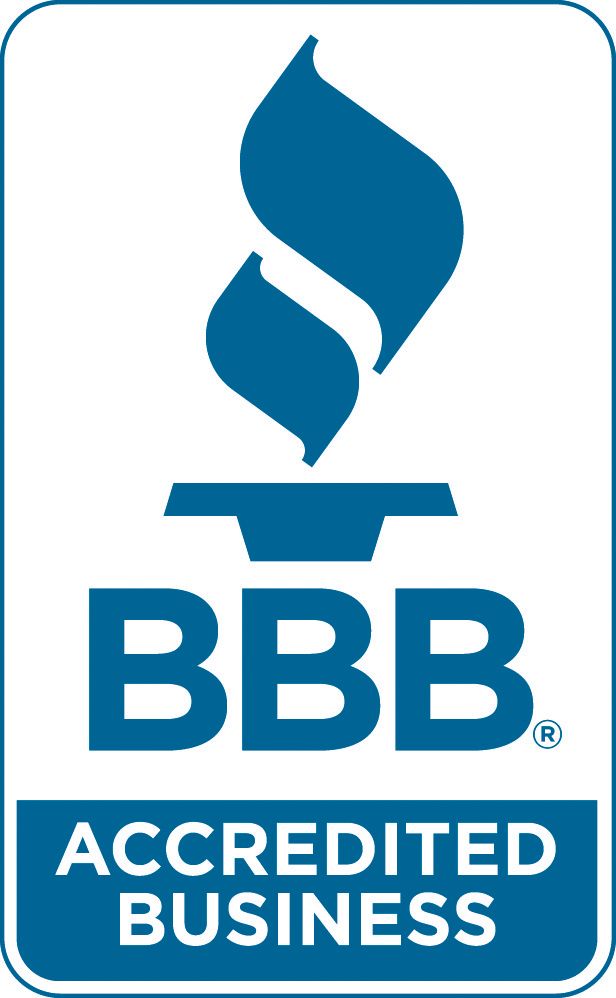Roofing FAQs in Las Vegas, NV

Replacements
When should I replace my roof instead of repairing it?
If your roof is over 20–25 years old or showing widespread issues—like curling, cracked, or missing shingles, active leaks, granule loss, or a sagging roof deck—it may be time to consider a full replacement rather than just a patch.
For tile roofs, replacement might be necessary when underlayment has deteriorated, there are frequent leaks, or too many tiles are broken to repair affordably. With flat roofs, signs like ponding water, cracking, membrane blistering, or seam separation often mean it’s more cost-effective to replace than keep patching.
We recommend annual inspections to catch problems early and help you make the right call before small issues turn into expensive ones.
How long will my roof last?
The lifespan of your roof depends on the material, climate, and—most importantly—ongoing maintenance. These estimates assume regular upkeep and no severe weather damage:
- Asphalt shingles (standard 3-tab): 15–20 years
- Architectural shingles (laminate/dimensional): 20–30 years
- Metal roofing (standing seam or coated): 40–70+ years
- Tile, slate, or concrete roofs: 50–100+ years — Tile lasts decades, but the underlayment typically needs replacement every 20–30 years.
Flat roofs:
- Modified Bitumen (torch-down): 15–25 years
- Foam roofing: 10–20 years, but requires consistent maintenance and recoating every 5–10 years to maximize lifespan
Even the most durable roofs need occasional inspections, sealing, and repairs to perform at their best—especially in extreme heat or high UV environments like Las Vegas.
What factors influence the cost of a roof replacement?
Several factors impact the total cost of replacing your roof, including:
- Roof size and complexity – Steeper pitches, multiple levels, valleys, dormers, skylights, and chimneys increase labor and material needs.
- Roofing material selection – Asphalt shingles, tile, metal, clay, and slate all vary widely in cost and installation difficulty.
- Labor and regional pricing – Local market rates, demand, and even time of year can affect cost.
- Existing roof tear-off – Removing multiple layers or hauling away heavy materials like tile can increase disposal and labor costs.
- Underlayment, flashing, and ventilation upgrades – These are often required to meet code or manufacturer warranties.
- Decking condition – Rotted or damaged plywood or OSB must be replaced before a new roof can be installed.
- Permits, code compliance, and waste disposal – City permitting, HOA requirements, and disposal fees all play a role.
- Access and logistics – Difficult-to-reach roofs (e.g., multi-story buildings, limited driveway access) may require extra equipment or time.
- Special coatings or waterproofing systems – Especially for flat or low-slope roofs
- Warranty level – Upgraded systems or extended warranties from the manufacturer or contractor may come with higher upfront costs.
Every roof is different—so we always recommend an in-person inspection and custom estimate to get the most accurate pricing. All estimates are broken down clearly so you know exactly what you’re paying for.
How long does the installation process take?
Most repairs are completed in 1–3 days, depending on the scope and accessibility. Full roof replacements typically take 3–5 days, though larger or more complex projects may extend to 6 days or more.
Several factors can affect the timeline, including:
- Roof size, pitch, and design complexity
- Weather conditions and drying time (especially on flat or coated roofs)
- Material availability and delivery schedules
- Additional work such as replacing damaged decking or correcting structural issues
At Source 1 Roofing, we don’t cut corners to finish fast—we focus on getting it done right. That means careful attention to every detail, quality workmanship, and a roof that’s built to last. We’ll always keep you informed of progress and notify you of any changes to the schedule.
Do I need a permit—and is professional installation really necessary?
- In Clark County/Las Vegas, a permit typically isn’t required for a like-for-like roof replacement—like swapping out old asphalt shingles for new ones.
- But if you’re switching materials (e.g., adding tile), re-decking, or making structural changes, permits are absolutely necessary.
- And yes—professional installation is critically important, period. Licensed pros ensure the job is code-compliant, detail-focused, and built to last—plus, they handle any permits so you don’t have to.
What roofing materials do you offer, and how do I choose the right one?
Source 1 Roofing installs:
- Asphalt shingles (3-tab and architectural)
- Metal roofing, including standing seam
- Tile and slate, where structurally appropriate
- Flat roofing systems, including torch-down, foam, and elastomeric coatings
We’ll help you choose the right system based on your budget, home or building type, climate, and how long you want it to last. We also go over color, energy efficiency, and reflective options where available.
Will a new roof lower my energy bills?
Yes. A properly installed roof can help reduce energy costs, especially in the Las Vegas heat.
A new roof—even with standard materials—is almost always an upgrade over older systems and can improve your home’s energy efficiency.
Upgrades that improve energy efficiency include:
- Upgraded shingles or cool roof coatings
- Metal roofing
- UV reflective roofing
- Elastomeric coatings for flat roofs
- Radiant barriers or insulated/upgraded underlayments
- Proper ventilation and attic airflow to reduce heat buildup
We’ll go over your options to help improve indoor comfort and cut energy usage where it counts.
How should I prepare my home before installation?
Roofing is a major construction project, and prep makes a big difference in safety and protection. Here's what we recommend:
- Remove all vehicles from driveways and garages before work begins. If you are concerned about protecting your driveway from the dumpster or debris, please talk to us prior so we can help make arrangements.
- Take down cameras, decorations, string lights, and anything fragile near the roofline or attached to the structure.
- Satellite dishes can be removed and reinstalled by our team with your permission. However, you’ll need to contact your provider to have it properly retuned after the work is complete.
- Cover or move patio furniture, BBQs, plants, or anything you care about—debris can fall unexpectedly.
- Cover pools or hot tubs, and let us know about any specialty covers or concerns.
- Protect valuables or fragile items inside the home as well, especially items hanging on walls or shelves (roof vibrations can knock things loose).
- Keep pets and children indoors or away from work areas.
- Watch out for nails, sharp debris, and tools in walkways and driveways—we do our best to clean up, but it's still an active job site.
- Notify neighbors, especially in tight communities or shared buildings
- Be available (or assign someone) to answer questions or make on-the-spot decisions when needed
Your crew will take precautions, but the more prepared the property is, the smoother and safer the job will go—for everyone.
What happens if damage is discovered during the project?
Once the old roofing is removed, we may uncover rotted, cracked, or unsafe decking, or other damage that wasn’t visible during the initial inspection. If this happens:
- We’ll provide photos and an updated estimate before proceeding.
- You automatically approve up to $200 in decking replacement to avoid delays.
- Anything beyond that will be communicated and documented.
If the decking is too damaged to safely install the new roof, we’ll pause work and notify you. If required repairs are refused, the contract may be terminated, warranties voided, and a partial invoice issued for completed work.
This policy ensures the safety, performance, and code compliance of your roof system.
Can I stay in my home during the replacement?
Yes. Most homeowners stay home during the roof replacement. The process is safe, but it can be loud—especially in rooms directly under the work area. We recommend planning ahead for pets, kids, and noise-sensitive activities while crews are on-site.
What maintenance is recommended post-installation?
To keep your roof in top shape and extend its lifespan:
- Inspect annually—especially after storms or seasonal changes
- Clean gutters and remove debris from the roof surface
- Trim overhanging trees and branches
- Check for cracked tiles, missing shingles, or exposed fasteners.
- Watch flat roofs for ponding water or coating wear
- Avoid pressure washing, which can damage materials and void warranties.
- Keep records of inspections and repairs
Source 1 Roofing offers maintenance plans and scheduled inspections to help protect your investment and keep your roof performing like it should.
Repairs
How can I tell if my roof needs repair?
Common warning signs include:
- Missing, cracked, curled, or bent shingles
- Granule buildup in gutters
- Water stains or leaks on ceilings or walls
- Sagging or uneven rooflines
- Loose or slipping tiles
- Cracked flashing or exposed nails
- Ponding water or bubbles on flat roofs
If you notice any of these, it’s time to schedule a professional inspection—early repairs can prevent bigger problems later.
What types of roof repairs do you handle?
At Source 1 Roofing, we specialize in a wide range of roof repairs to help extend the life of your existing system. Our repair services include:
- Shingle repairs – Replacing damaged, loose, or missing shingles caused by wind, sun exposure, or impact
- Flashing repairs and replacements – Sealing or replacing flashing around chimneys, skylights, walls, and roof penetrations to stop leaks
- Vent and drip edge repairs – Fixing or upgrading roof vents, pipe boots, and drip edges to maintain airflow and protect against water intrusion
- Leak detection and repair – Identifying and resolving leaks caused by storm damage, age, or installation errors
- Decking repairs – Replacing or reinforcing sections of damaged or rotted wood beneath the roofing system
- Flat roof patching and coatings – Addressing blisters, cracks, or wear in foam and torch-down systems to prevent further damage
We provide honest assessments and recommend repairs only when they’re necessary—saving you money and extending your roof’s lifespan.
Is it better to repair or replace?
If the damage is minor—like a few missing shingles or a flashing issue—a repair is usually the most cost-effective option.
But if the damage is widespread or recurring, or your roof is nearing the end of its lifespan, a full replacement may be the smarter long-term solution.
At Source 1 Roofing, we help you determine what’s needed and give you the tools to make the best decision for your roof—no pressure, just honest answers.
How long do roof repairs typically take?
Smaller repairs—like replacing shingles, replacing a few tiles, or sealing flashing—can often be done in a few hours to one day.
Larger or more complex repairs—such as leak tracing, decking replacement, larger repair areas, or flat roof fixes—may take 1–3 days, depending on what’s needed.
We’ll give you a clear timeline before we begin so you know what to expect.
How can I prolong the lifespan of my roof after a repair?
The key to getting the most out of your repaired roof is regular maintenance and early intervention. Best practices include:
- Scheduling annual inspections, especially after wind, rain, or extreme heat
- Cleaning gutters and downspouts to prevent water from backing up under roofing materials
- Trimming overhanging branches to reduce debris buildup and prevent impact damage
- Checking attic ventilation to ensure proper airflow and reduce heat/moisture buildup
- Avoiding foot traffic on the roof unless absolutely necessary—especially with tile or foam systems
- Re-coating flat or foam roofs on schedule to maintain waterproofing
- Fixing small issues promptly—even a minor crack or lifted shingle can lead to bigger problems if left alone
Source 1 Roofing also offers maintenance plans and inspection services to help extend your roof’s lifespan and catch problems early.
Is it safe to attempt roof repair myself?
While basic tasks like cleaning gutters or replacing a single shingle may seem manageable, most roof repairs—especially anything involving flashing, leaks, or structural issues—require professional tools, training, and safety equipment.
DIY roof repairs come with serious risks:
- Injury from falls is one of the top causes of ER visits related to home improvement.
- Improper repairs can lead to more extensive damage over time.
- Voided warranties — Many roofing systems require professional installation and repairs to maintain warranty coverage
- Missed underlying issues — Surface fixes may not address hidden damage or root causes
If you're unsure, it's always safer (and smarter long-term) to let a licensed professional handle it. We’ll make sure it’s done right, backed by warranty, and without putting your safety—or your home—at risk.
How do I choose a reliable roofing contractor?
A quality contractor will offer more than just a good price. Look for companies that:
- Are licensed, bonded, and fully insured
- Have local references, strong online reviews, and a history of work in your area
- Provide clear, written estimates with detailed scope of work, materials, and costs
- Explain warranty coverage for both labor and materials—what’s covered, for how long, and by whom.
- Communicate professionally and show up when they say they will
- Are willing to answer questions, provide documentation, and walk you through the process
- Don’t pressure you with same-day “sign now” deals or vague pricing
At Source 1 Roofing, we believe in honesty, transparency, and quality work—no surprises, no shortcuts.
What’s included in a typical repair service from Source 1 Roofing?
Every repair we do is more than just a quick fix—it’s a complete, professional service from start to finish. Here’s what you can expect:
- Thorough inspection – We assess the roof and surrounding areas to identify the source of the problem, including any hidden damage or contributing factors, to the best of our ability.
- Clear, written estimate – You’ll receive a detailed breakdown of recommended repairs, pricing, and expected timelines—no surprises.
- High-quality repair work – Repairs are completed using dependable, long-lasting materials and best practices to ensure the issue is resolved properly.
- Photo documentation – Before and after photos are provided so you can see exactly what was done.
- Jobsite protection and cleanup – We do our best to protect your property during the repair process and remove all debris, materials, and equipment when we’re done.
- Final walkthrough or inspection – A final check is performed to ensure repairs meet our quality standards and your expectations.
Our goal is to make your roof reliable again—and to give you peace of mind knowing the job was done right.
Roofing Services FAQs
What Should I Look for When Comparing Roofing Services?
When comparing roofing services, pay attention to experience, certifications, material options, warranties, and reviews. A reliable roofing company should be licensed, insured, and transparent about costs and timelines. We provide detailed consultations to ensure every customer understands their options before any work begins.
How Do I Know if My Roof Needs Professional Inspection or Just Maintenance?
If you notice leaks, missing shingles, or sagging areas, it’s time for a professional inspection. Regular maintenance helps identify minor issues before they turn into major damage. Schedule an inspection with a trusted roofing contractor to assess your roof’s condition accurately.
What Are the Benefits of Choosing a Local Roofing Company in North Las Vegas, NV?
Choosing a local roofing company means working with professionals who understand regional weather patterns, building codes, and roofing materials that perform best in desert climates. Source 1 Roofing combines this local expertise with personalized customer care, ensuring your roof is built to last.
What Types of Warranties Do You Provide on New Roof Installations?
Source 1 Roofing offers both manufacturer and workmanship warranties, giving clients peace of mind that their investment is protected. Warranty coverage varies based on the roofing materials selected, but all work is backed by a commitment to quality and customer satisfaction.
Do Your Roofing Services Include Assistance With Insurance Claims?
Yes. We offer support for customers filing insurance claims related to storm or wind damage. Their roofing services include documentation, inspection reports, and direct communication with insurers to help streamline the claims process and ensure you get the coverage you deserve.
Need answers fast? Call Source 1 Roofing at (702) 682-1131 today for trusted roofing help in Las Vegas, NV.















